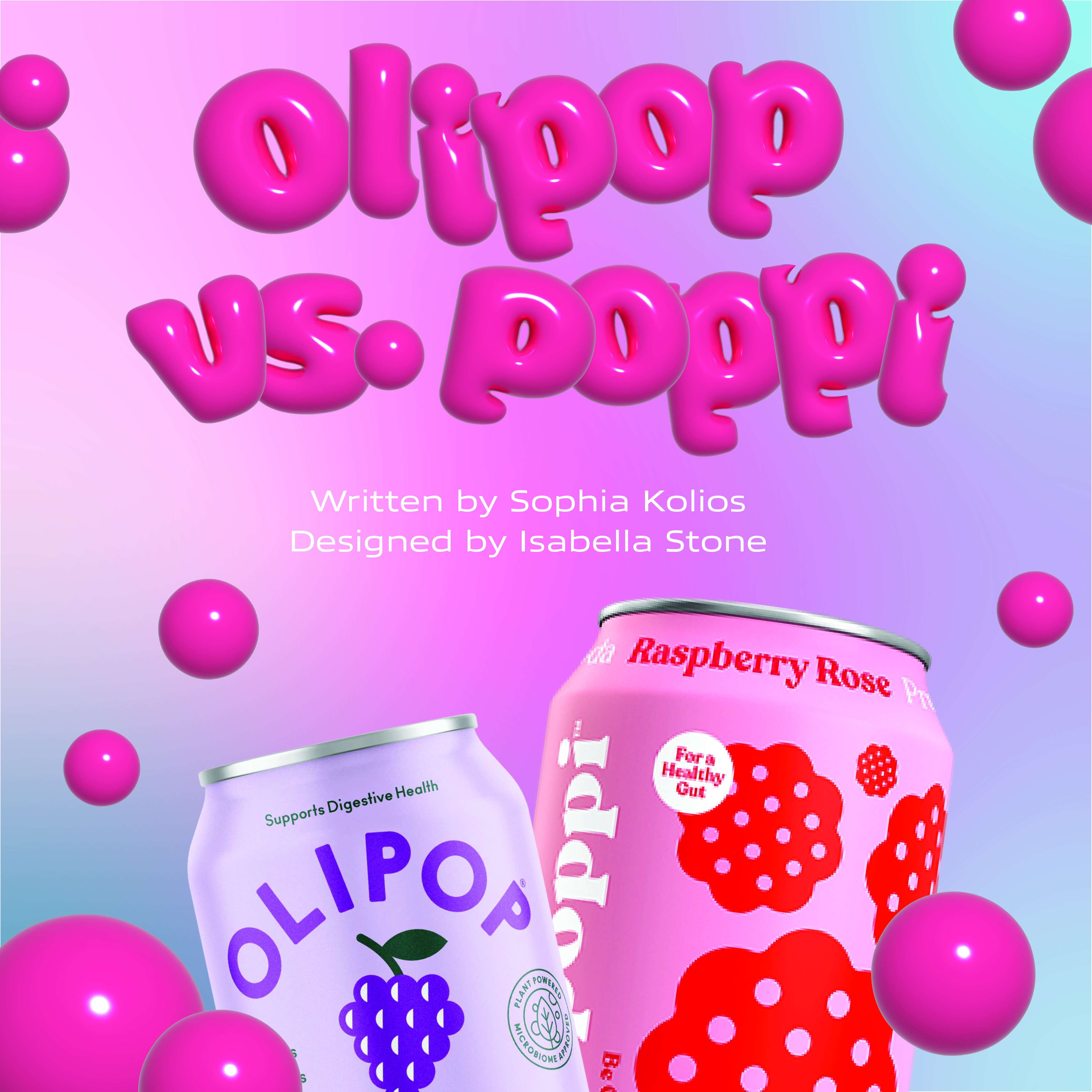
Walking through the drink aisle in grocery stores, there are seemingly dozens of fun carbonated options to pick from, and following the marketing shift toward health-focused needs and benefits, the stress that comes with choosing one beverage is significantly more difficult!
Since the COVID-19 pandemic, the world demand has quickly shifted to a health-centered lens for products, especially consumables. There is an annual growth rate of about 5 percent to 10 percent of products advertised towards health and wellness, meaning there is some method behind the surface promotion. In 2020, two different soda brands blew up out of what seemed like nowhere. With their similar product packaging, branding, names and purposes, Olipop and Poppi grew to be some of America’s most popular sodas.
Olipop was created by Ben Goodwin and David Lester. In 2005, Goodwin dropped out of college to work for a friend’s kombucha company. With an interest and passion in environmental studies and overall health, Goodwin was able to turn his dream of “helping push people’s diets in a healthier direction” and his experience in kombucha craft, into a reality alongside his co-founder Lester, who, at the time, was a full-time entrepreneur. The two men then created a delicious soda focused on the science behind the gut microbiome’s uplifting effects when introduced to certain ingredients.
Poppi, on the other hand, was created by Allison Ellsworth, a mom of three who was ready to let go of standard sodas as we knew them, and her husband, Stephen Ellsworth. Wanting a fun and fizzy beverage minus the unfavorable way they made her feel, she took matters into her own hands (and kitchen) to experiment with making a delicious soda with health benefits. Ellsworth was nine months pregnant when she appeared on Shark Tank in 2018, which ultimately helped her boost the business. After its rebrand in 2020, Poppi began to be noticed by bigger brands like Whole Foods and was even featured in a 2025 Super Bowl advertisement.
Olipop’s marketing is genius, keeping things simple by tapping into what the consumer wants to see in their daily beverage. Entering a competitive market of pre-determined sodas — which its consumers seem to swear by — meant Goodwin and Lester had to make their drinks stand out. When looking at the soda aisle in grocery stores, there are rows upon rows of familiar soda cans, often characterized by rich colors and classic logos; when Olipop hit the market, its bubbly and bright packaging was quick to gain attention.
The packaging is simple, with one base color matching the flavor — like purple for Classic Grape — along with a cute, curved font and, well, what they’re known for: “supports digestive health,” “non-GMO,” “prebiotics” and their slogan, “a new kind of soda.”
Olipop was able to gain familiarity amongst its market by introducing pre-established flavors like cola and root beer, advertising it as the “healthier alternative” for a drink that is considered a guilty pleasure. Gen Z became the target audience for the brand as it gained significant traction on social media platforms like TikTok, where drink recipes easily go viral. From mocktails and frozen colas to full Olipop taste tests, the brand’s popularity skyrocketed and earned their place on grocery store shelves.
Similar to Olipop, Poppi also focuses on bright packaging with a fun vertical font on the side of the can, and “It’s Time to Love Soda Again” curved around the fruit of choice splayed in bright colors. Additionally, big celebrities like Camila Cabello have been seen enjoying the drink in campaigns which drive the Gen Z demographic.
The main factor of this showdown, however, lies in the flavor and dietary benefits. In terms of flavor, there is no clear-cut winner since both brands are delicious and taste is subjective. The general public seems to agree that it just comes down to which available flavors one prefers. Olipop currently offers 18 different drinks on its website, focusing on spins of classic flavors, whereas Poppi offers 15 flavors with a more fruity focus. The dietary benefits are similar between the two with Poppi having a shorter ingredients list. Inulin and apple cider vinegar serve as its main forms of prebiotics, and it has two grams of fiber per can. Olipop on the other hand has 9 grams of fiber per can with its prebiotics coming from a blend of various roots. For more accurate gut health claims and health benefits, Olipop is the clear winner. Regarding demographics, Olipop has been more of a hit for millennials as their flavors have been described as “classic,” and hence, “nostalgic.” Poppi on the other hand has specifically blown up with Gen Z due to its reinvigorated and fun flavors, which Billie Eilish — an honorable face of Gen Z — claims to love.
Switching to healthier alternatives for consumables is becoming more seamless with brands like these creating delicious and beneficial alternatives. Implementing more fiber into one’s diet feels simpler than ever, so when deciding which gut-friendly soda to pick up in the grocery store, know that it’s all up to personal preference. Either way, both brands are a big step in the right direction for the future of health foods.